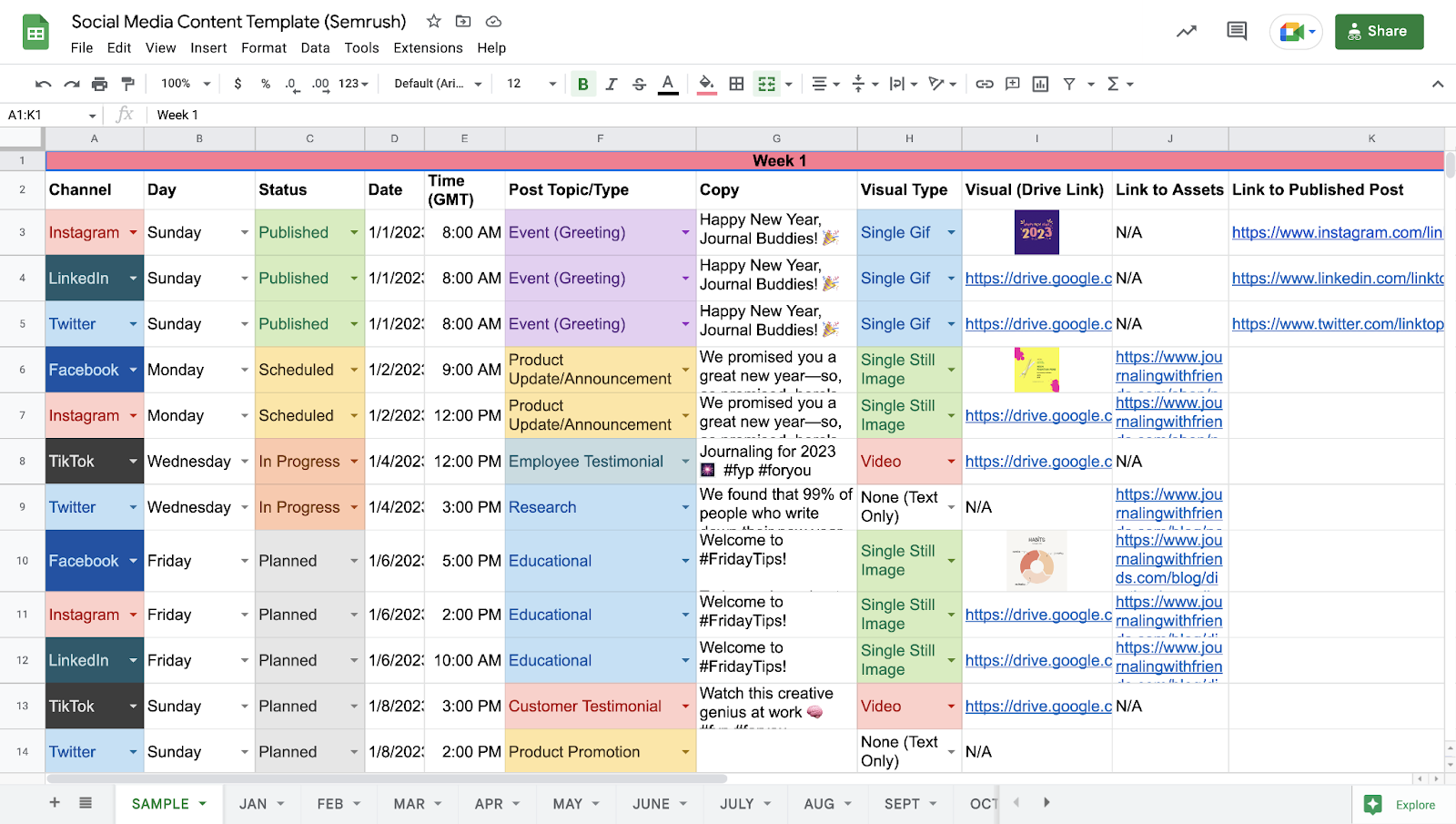Mastering Social Media Strategies for E-Commerce Success
Social media has become incredibly important for businesses, especially those in e-commerce. Whether you're running a small or large e-commerce website, using social platforms effectively can make a big difference.

With roughly 4.95 billion users across social media platforms, a good strategy can help boost your online presence and get potential customers to find you. This, in turn, can spiral into larger sales.
In this guide, we'll go through everything you need to know about using social media for e-commerce.
What is social eCommerce?
Social media e-commerce, or social commerce, is the fusion of social media and online shopping. It's about using platforms like Facebook, Instagram, Pinterest, and TikTok to showcase products, interact with customers, and boost sales.
Unlike traditional e-commerce, where people buy from a website, social e-commerce bridges the gap between browsing and purchasing by seamlessly integrating shopping features into social media channels. This means that social media users can buy products directly from a particular social media platform instead of being redirected to your website.
Social e-commerce is more interactive and allows users to share, like, and recommend products to their friends and followers. Incorporating strategies such as video marketing for e-commerce can further enhance this experience, as videos can showcase products in action, provide tutorials, or offer behind-the-scenes glimpses, all of which can drive engagement and sales. This can lead to a more engaging online shopping experience and a wider audience reach.
Benefits of Social E-Commerce
Studies show that Social media users spend an average of 2 hours and 30 minutes on social channels. Social media e-commerce presents business owners with an opportunity to get the attention of active users within that time window.
For instance, businesses can reach a broader audience by sharing compelling social media posts and engaging with active users. Here are some other benefits:

1. Product discovery - Social media is one platform where online shoppers can easily come across your products, even when they're not looking. For example, one might be surfing through the Explore page on Instagram and stumble upon a product that you posted.
2. Direct Customer Engagement - Social networks offer a direct communication channel with your audience. For instance, responding to comments, messages, and reviews, allows you to connect meaningfully with potential customers and build trust.
3. Cost-effective Marketing - Social media offers a range of cost-effective marketing options. You can leverage free organic reach by creating engaging content that resonates with your audience.
Additionally, you can use social media ads to target specific demographics and interests, maximizing the impact of your marketing budget.
Also, social media is a platform that thrives on user-generated content. This is something you can leverage by encouraging customers to share their experiences with your products. Doing that not only helps to boost your brand engagement but can also serve as social proof— so potential customers are more positive about shopping with you.
Top Platforms for E-Commerce Social Media Marketing
Now, let’s explore 3 major social commerce platforms that you can take advantage of:
1. Facebook
Facebook is a popular platform with over 3.05 billion users, making it promising for social media e-commerce. It's quite easy to establish a business presence on Facebook—all you need is a simple business account that's well-optimized. Optimized in this context means that the page has all the relevant information about your e-commerce business.
Facebook allows you to share Shoppable posts. This feature lets you showcase your products within your feed, complete with prices and a button that potential customers can click to make purchases without leaving the platform. That’s what Girlfriend Collective uses in the example below:

You can also create a Facebook Shop where customers can see available products and make direct purchases. Your products will also be displayed on Facebook Marketplace where more online shoppers can see them. This is what Facebook Marketplace looks like:

Additionally, you can use Facebook Messenger to set up automated responses for common queries. You can also manage inquiries and even process orders directly. If you use the Facebook Business Suite App, it's a lot easier to do all of these.
2. Instagram
Instagram is one platform that thrives on visuals, meaning that you can leverage high-quality images and video content to engage with your followers. But that's not the only exciting part. Instagram also allows you to share shoppable content. You can tag your products directly in your organic posts so that social shoppers can click to view details and make purchases. It's quite seamless and convenient for potential buyers. A strong presence on Instagram also depends on engagement, consistency, and an active follower base. Many brands focus on strategies to grow their Instagram followers to strengthen their reach and visibility. See this example from Sephora’s post:

Here are some other features that make Instagram a great social marketing channel:
a. Instagram shopping - If you have an e-commerce website, you can set up Instagram Shopping to allow users to browse your catalog directly on the app. Making it easier to sell your products. Here’s an example:

Source
b. Stories - Although short-lived, you can use Instagram stories to promote your special offers, flash sales, and other important updates about your e-commerce brand. You can also create engaging polls and other interactive content types on IG stories. The swipe-up feature (available for accounts with over 10k followers) enables you to link directly to product pages.

Finally, you can use hashtags to ensure that more people discover your posts and products. For instance, if you sell handmade jewelry, hashtags like #HandmadeJewelry or #ArtisanCrafts (see the above image) help target the right audience.
3. TikTok
TikTok is another effective social e-commerce platform. It's reputable for the short-form videos that drive engagement. Engaging visuals and trends can help increase brand visibility and keep your TikTok followers glued. You can use this short-form video to promote your e-commerce business especially if you cater to a younger audience base. TikTok is also well-known for key trends that you can hop on as a brand using relevant hashtags. Now, to the interesting part— TikTok Shop!
TikTok shop is a fully integrated e-commerce platform within the TikTok app. The shop is designed to connect brands with active users on the app. Users can also purchase products directly from the app.

It gets better— TikTok has a live shopping feature that allows users to tap on pinned products (or on a shopping basket icon) to buy products directly. You can also create shoppable videos that allow users to click on product links for purchases.
All three social platforms allow for targeted shopping ads to get your products in front of potential customers based on demography, interests, and user behavior on the app. You also have access to built-in analytics tools to monitor the performance of your page.
How to Create a Social Media E-commerce Strategy
Crafting a successful social commerce strategy requires thoughtful planning. First off, you need to understand your target audience. See which platforms they use the most and note the type of content that resonates with them. Knowing where your target market is most active will help you create a more effective social media marketing strategy.
You can gather your audience insight by observing similar e-commerce brands in your industry and looking at the top platforms they use for engaging their audience. Consider conducting direct audience research through surveys, polls, or social listening tools for deeper insights. If you already have a social media presence on several platforms, focus your efforts on the platform with the highest engagement.
As your strategy becomes more multi-layered, managing content across several platforms manually can get overwhelming. That’s why many e-commerce brands turn to social media management tools to plan, schedule, and monitor their posts more efficiently, all from a single dashboard. These tools can help you stay consistent, save time, and focus on what matters most: engaging your audience and growing your business.
After gathering information about your audience, here's what to do next:
1. Set clear goals - Are you aiming for brand awareness, website traffic, or direct sales? Defining clear objectives will help you channel your efforts in the right direction. It’ll also give you a benchmark for measuring the effectiveness of your strategy.
2. Plan your branding – You want to maintain a consistent brand identity. Ideally, your social media brand should align with what you have on your website. Details like colors, image backgrounds, tone of voice, and the type of audio to use should be deliberately considered.
3. Create a content calendar - Plan how you want to post new products on your social media pages and which content types you will use to promote your products. Also, plan the theme for each of your posts and ensure that you have a defined goal for each post. Here’s a good example of a content calendar from Semrush.

4. Determine your engagement strategy - Consider the need to promptly respond to comments and messages. Also, deliberate on other tactics for building user engagement. For instance, you can plan special contests or giveaways. You can also plan a user-generated content campaign, a referral program, or an influencer marketing campaign.
Finally, you should regularly assess your performance metrics– likes, comments, profile reach, and conversions are important social media insights to observe.
According to a curated list published on Attrock, tools like Agorapulse and its alternatives can help you assess metrics, in addition to monitoring social media conversations and engaging with followers. You can then adjust your strategy based on what’s working or not.
Conclusion
Social media and e-commerce are a powerful combination. Thankfully, popular platforms like Facebook, Instagram, TikTok, and Pinterest allow you to create a digital storefront that can reach a vibrant user base. As an e-commerce brand, you can take advantage of these platforms to build visibility for your products and boost online sales.
In this guide, we went over some key features of these social platforms that you can use to promote your e-commerce brand and reach your ideal audience. We also went over key steps for creating a social media e-commerce strategy. They include: understanding your audience, setting clear goals, defining your branding, planning your engagement strategy, and analyzing your social media performance.
Now, you can put them to use and watch how your e-commerce business thrives over time. Good luck!






